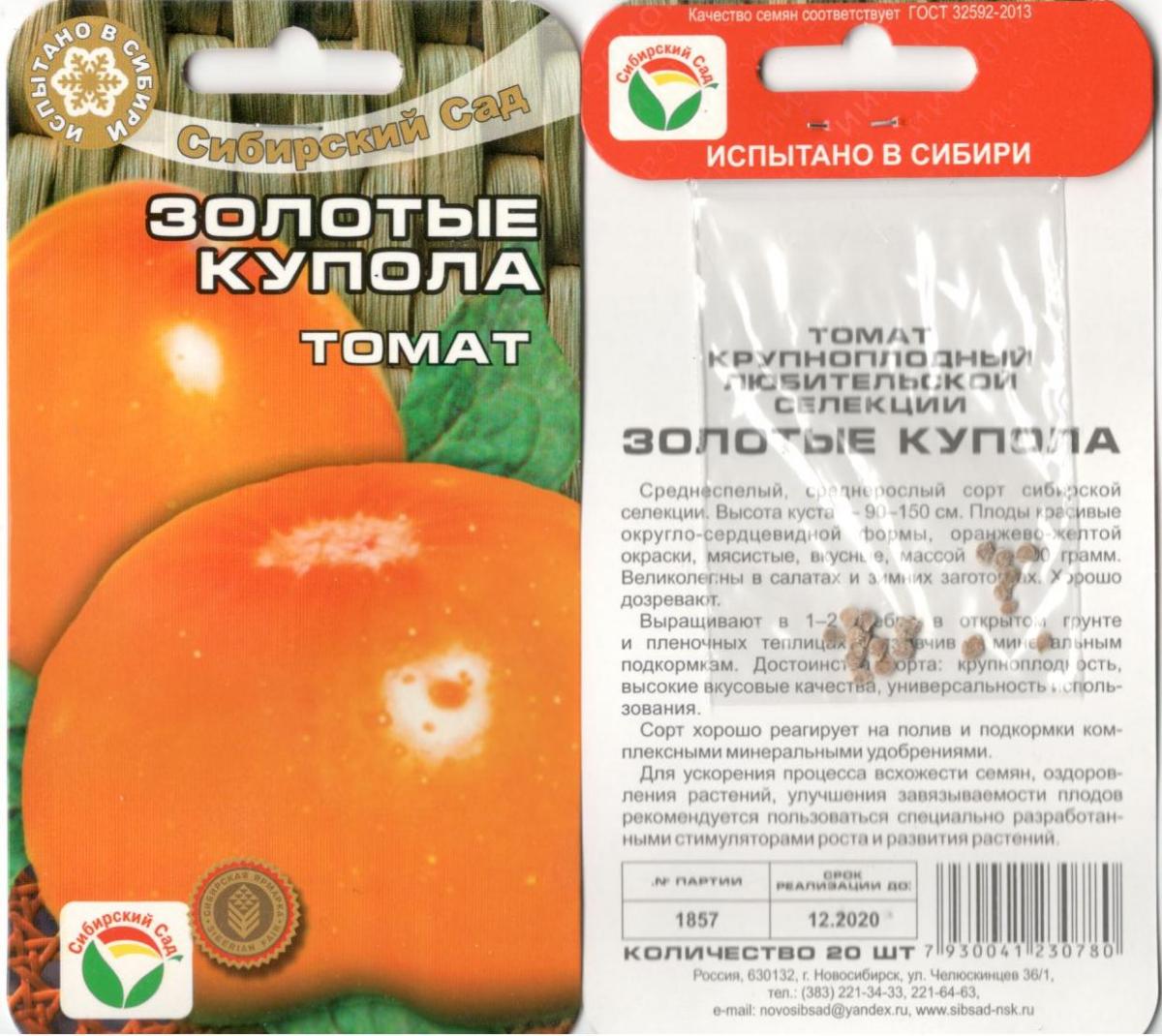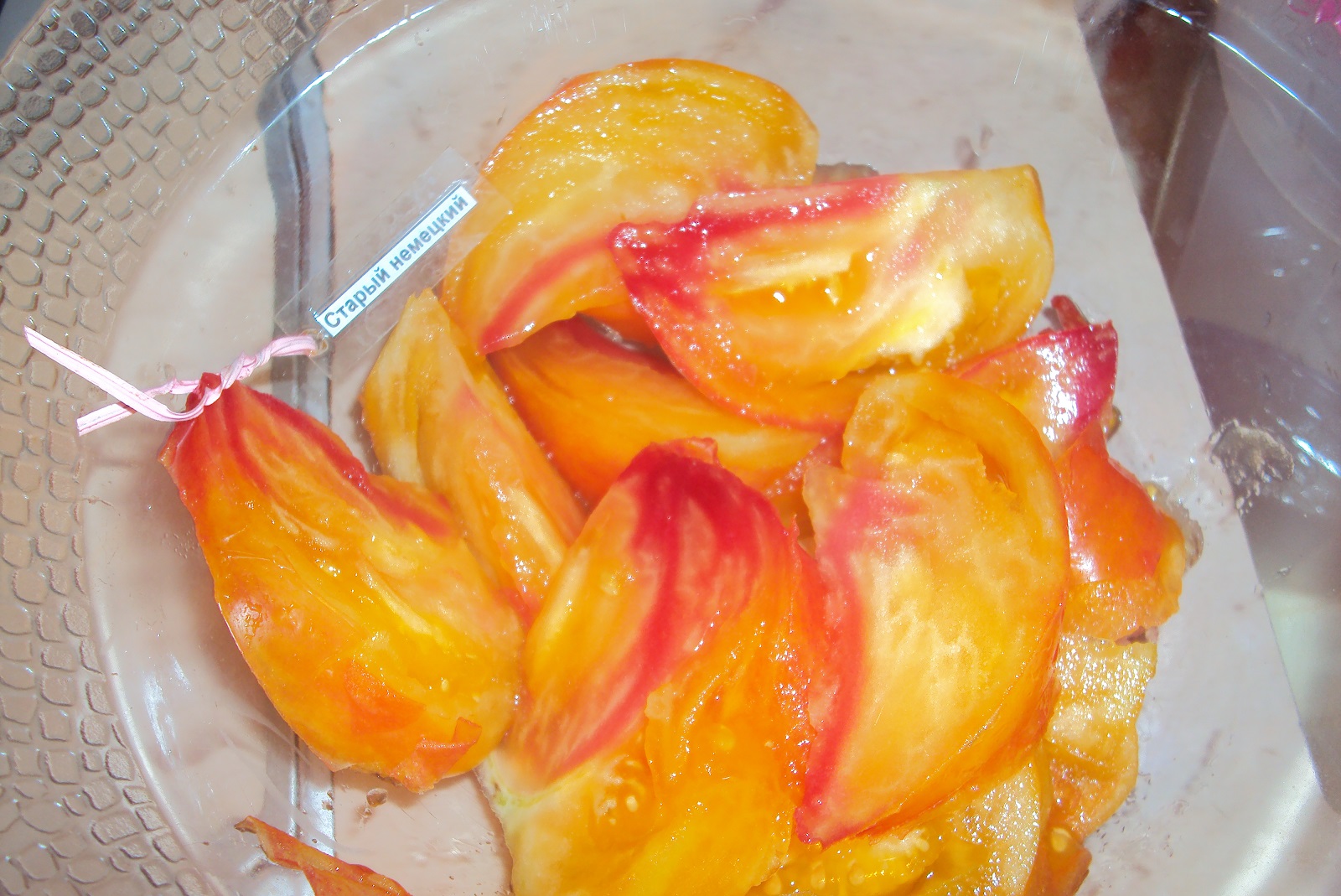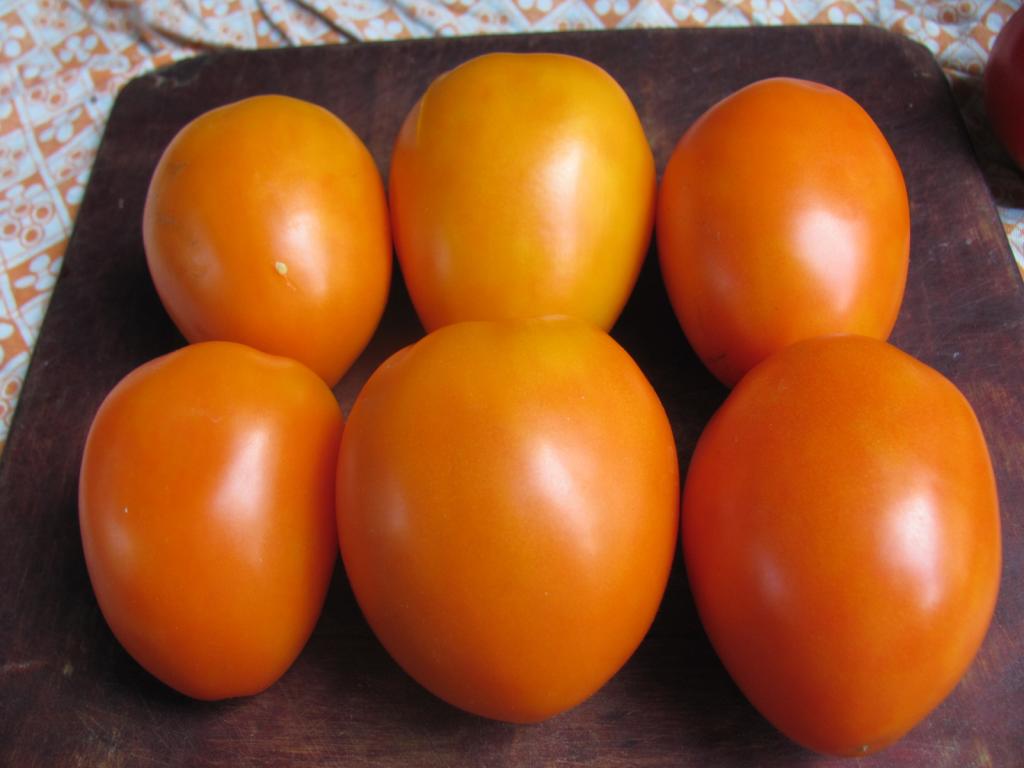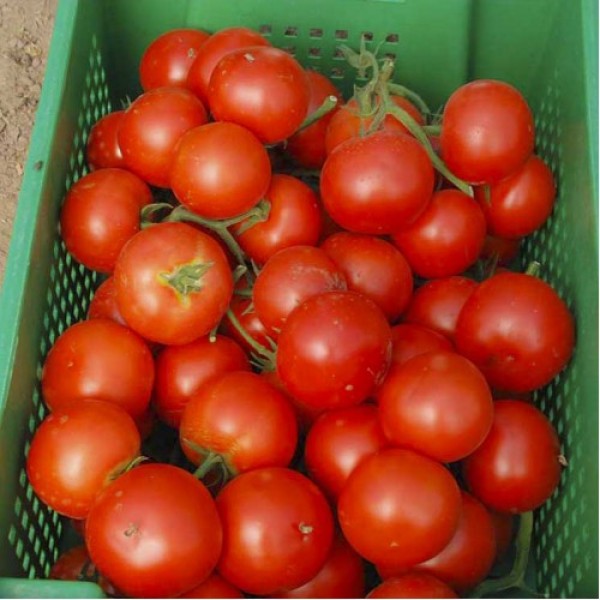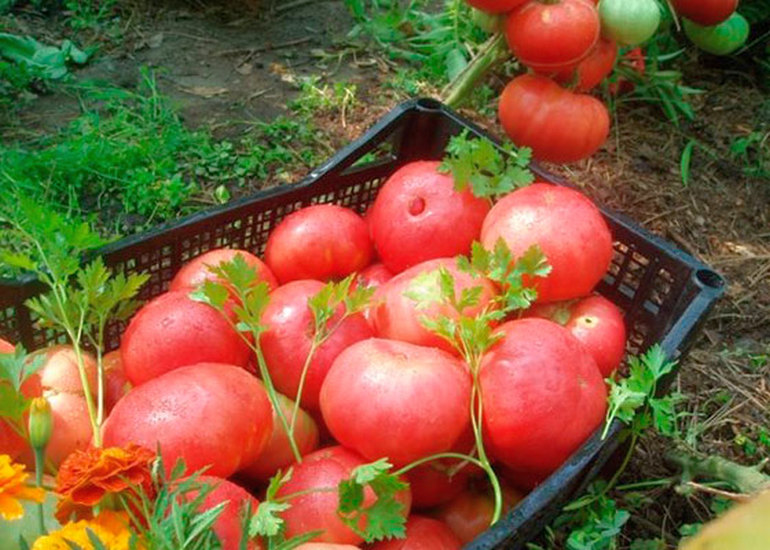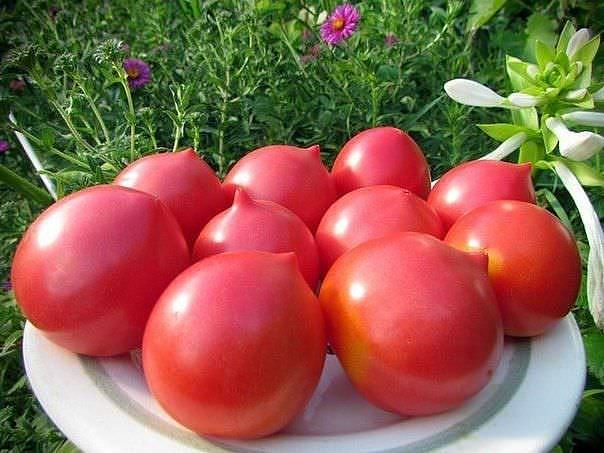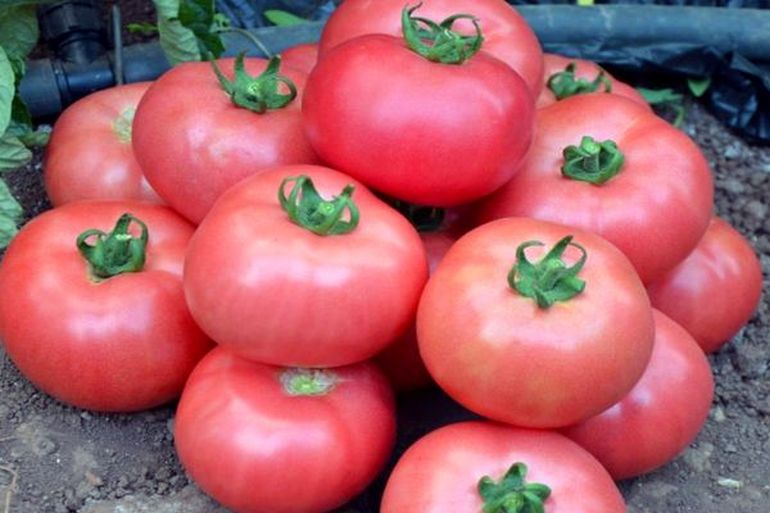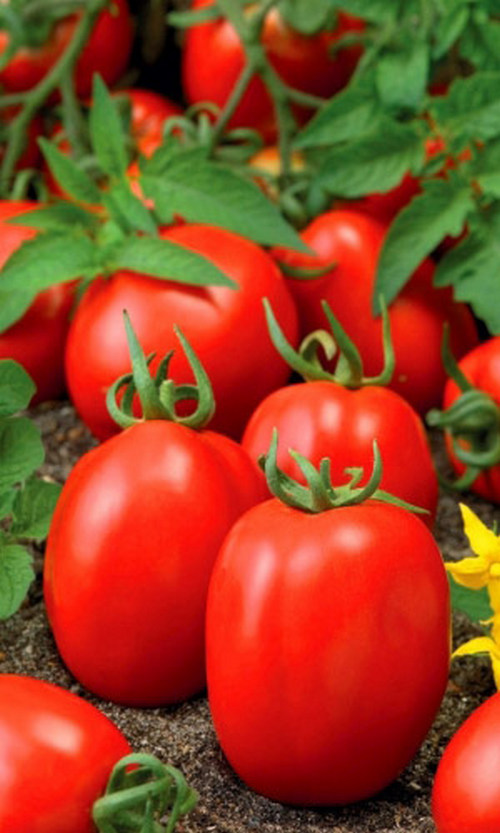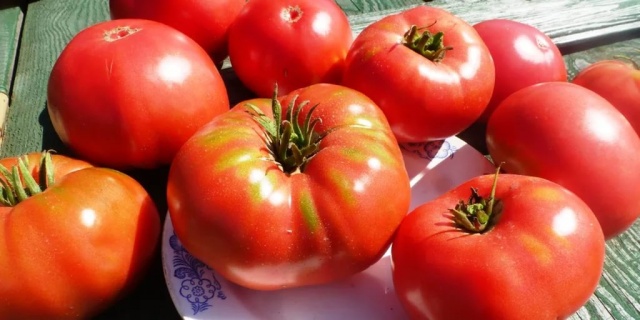Content:
Vegetable gardens throughout Russia grow vegetables that are best suited to the climate of a particular region. Among the tomatoes, one can single out a whole varietal series "Sibiriada", bred taking into account the harsh Siberian weather conditions. One of the brightest (in the literal sense of the word) of its representatives is the salad variety "Golden Domes".
This kind of tomato – one of the largest among the tomatoes with "domed" names:
- hybrid tomato Russian domes;
- the newest orange tomato variety Honey domes;
- hybrid of pink Obsk domes.
The history of the creation of the variety
"Golden domes" were created by the Siberian breeder V. N. Dederko and his colleagues. Before entering the State Register (in 2005), numerous tests for gene resistance were carried out, according to the results of which the variety was recognized as an outstanding Russian breeding achievement. At the same time, the "Golden Domes" are not a hybrid type of tomato, therefore there are no f1 hybrids.
The Siberian "origin" of this type of tomato affects a high level of adaptation to local conditions, therefore, "Golden Domes" can be found in the beds not only in the eastern Urals, but also in other regions with an unstable climate, which Russia is rich in, as well as in the CIS countries.
Description of the variety
Despite the fact that tomatoes are considered heat-loving plants, the Siberian tomato Kupola is not very susceptible to low temperatures - seedlings are planted on the beds already at plus 15 degrees. Although, according to the State Register of the Russian Federation, the variety is characterized as mid-season, many summer residents consider it medium-early or even early-maturing. On open soil (not in greenhouse conditions), this tomato gives the first fruits already 3.5 months after the shoots have appeared. New fruits appear as if in leaps and bounds, at a fast pace. Maturation occurs gradually.
The flowering is always rich, the inflorescence is of a simple form, the flowers are bright yellow, however, not everyone will subsequently grow a tomato. The tomato is self-pollinated.
Tomato bushes have an optimal height - from 0.9 to 1.5 meters, they are not too long (which would complicate maintenance) and not too short (which would reduce the yield). The integrity of the stems is maintained with stakes or trellis strips. Indoors (greenhouses), "Golden Domes" grow up to 1.5 meters, which does not quite correspond to the genetics of the variety. At some point, the stem stops stretching and forms tops, creating inconvenience.
In the bush, as a rule, there are two or three strong stems, the leaves are not too large, slightly inclined to the ground. This arrangement of foliage allows the plant to receive maximum sun rays and to be well ventilated.
At least 5, maximum 15 ovaries are formed on the hands. In shape, the fruits of such tomatoes resemble Russian church domes, which gave the name to the variety.Large tomatoes weigh on average 400-450 grams, there are also champions - 800-850 grams each. Each bush during the summer season is able to bring up to 7 kilograms of wonderful and unusual tomatoes.
This unusual variety has two types of fruits: the largest are round, slightly flattened at both ends, slightly ribbed from the stalk, they ripen the very first. Those that grow later already resemble a heart or a church dome. Fruits of substandard shape practically do not grow (except during prolonged hot weather), almost all of them have an excellent presentation, even and beautiful shape. The marketable tomato yield exceeds 75 percent.
The skin of the fruit is bright orange or yellow-ruddy in color, while in unripe tomatoes a green area is observed near the petiole, which is colored as the tomatoes ripen.
The pulp is juicy, dense, not watery, there are few seeds, the consistency is similar to honey. The tomatoes are sweetish on the palate, with a light citrus note.
Due to its unusual color and large fruits, the Golden Domes are used primarily as a salad variety. Due to their low acidity, such tomatoes can be used in dietary nutrition. Tomatoes of this type are very rich in vitamins, as well as lycopene (a powerful antioxidant that slows down the aging of the body) and a large amount of carotene (it is he who gives the fruits a bright orange color).
Very good tomato Golden domes for making juices and sauces. If you combine them with ordinary red tomatoes, tomato juice will have an original color and a pleasant, almost fruity taste. When tomatoes are heat treated, nutrients are not destroyed, so they can be used for soups and seasonings (ketchup, adjika), and for snacks and second courses (lecho). Tomatoes of this type can be harvested for the winter: in barrels or cans (in this case, the purchased fruits have to be cut into pieces, which does not spoil the product).
Features of agricultural cultivation
Tomato Golden Dome has a characteristic and description of the variety as unpretentious. However, this does not mean that you can not take care of him at all. On the contrary, according to the reviews of tomato growers, this variety responds well to increased care about it by increasing the quality of fruits and productivity.
A couple of months before planting in the soil in the open field or in a greenhouse, tomato seeds must be soaked. For the fastest germination of seedlings, growth stimulants can be added. When young seedlings reach 50 days, they can be transplanted. This type of tomato is unpretentious to the quality of the soil. However, "golden domes" grow best of all on the beds after zucchini, cucumbers, cauliflower and carrots.
Before planting, you should first make a pick, for this the seedling must have at least 2 leaves. Before the appearance of constant heat, it is recommended to plant young seedlings of "Golden Domes" under a film and only then transplant into open ground. The step between adjacent bushes should be up to 0.5 meters, and adjacent grooves should be 0.4 meters apart from each other.
Another mandatory procedure for tomatoes of this type is pinching - this is how a two-stem bush is formed, sometimes it is obtained naturally.
A couple of weeks after planting, the young shoots are huddled, while equipping the beards to moisten the soil. This work helps to form additional roots on the stems, which help the tomato get enough moisture and nutrients.After completing hilling, it is advisable to feed the tomatoes with nitrogen, and during the flowering period with potassium-phosphorus fertilizers. Stimulation of foliage is undertaken a couple of times during the growing season with preparations based on vitamins, you can also take an aqueous mixture of potassium permanganate and laundry soap.
It is necessary to closely monitor timely (rather moderate) watering and feeding. Otherwise, incomplete filling of tomatoes and their cracking is possible. The frequency of watering, especially during the period of fruit filling, should not exceed a couple of times every 7-8 days, the water rate is 2 liters for each plant.
Advantages and disadvantages of the variety
This unusual type of tomato has a number of very valuable qualities, thanks to which it is becoming more and more popular among Russian gardeners:
- first of all, it is a high yield, which, with large fruits, makes the "Golden Domes" very profitable for growing;
- unusual taste with fruity notes and the composition of vitamins and minerals allows the use of such tomatoes for dietary nutrition;
- plants are resistant to most diseases and pests;
- tomato bushes are unpretentious to growing conditions - you can grow them both in open ground and in greenhouse conditions;
- Since it is a natural, non-hybrid variety, tomato seeds can be used to produce seedlings for the next year.
The variety has much fewer disadvantages:
- the taste is quite specific, to some it seems insipid;
- low keeping quality.
On many tomato beds, you can see large domed tomatoes - this is a variety of Siberian selection "Golden Domes". Unpretentious tomatoes with an unusual orange color are deservedly loved by summer residents, especially in regions with a cool climate.
